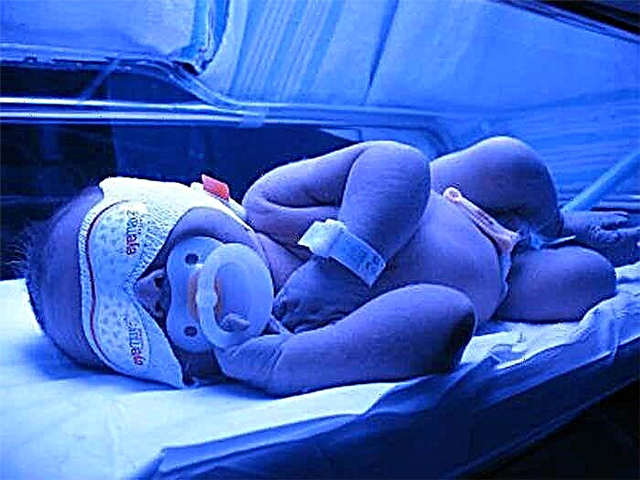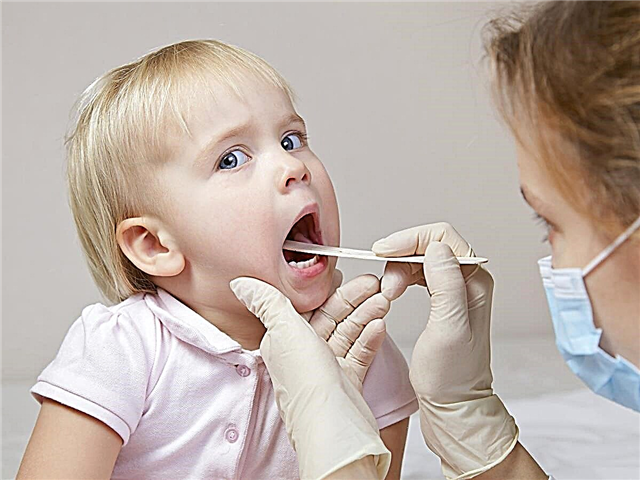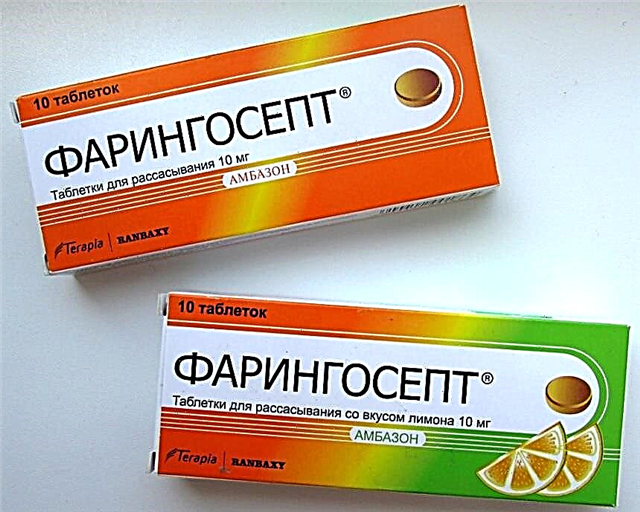
Teary and festering eyes in a child are not a sight for faint-hearted parents. Even without special medical knowledge, mums and dads understand that something needs to be done in this situation. After reading this article, you will learn about one of the reasons - dacryocystitis in children, as well as how to help the baby.
What it is?
Dactriocystitis is an inflammation that occurs in a special organ whose function is to accumulate tears (lacrimal sac). This organ is located between the nose and the inner corner of the eyelids. Tears are produced in all people - as a natural antiseptic and a protective mechanism for the organs of vision provided by nature. The excess of this fluid normally flows through the nasolacrimal canal into the nasal cavity and goes out.


If the lumen of this nasolacrimal canal is disturbed, then the outflow is very difficult. Tears collect in a bag - in the corner of the eye, which is why the eyes look watery. Inflammation and suppuration occur due to the multiplication of pathogenic bacteria. Stagnant biologically active liquid for them is an excellent breeding environment.
Inflammatory changes in the lacrimal sac can be caused by eye injuries, eye infection, and narrowing of the nasolacrimal canal is a consequence of eye diseases or a congenital feature of newborns. That is why dacryocystitis is very often called a disease of newborns.
In ophthalmology, they decided not to combine these two varieties of one ailment, since dacryocystitis of newborns is a more physiological problem, which is solved as the child grows. And dacryocystitis in general (for example, in older children) is a pathology that will have to be dealt with in a completely different way.


Dacryocystitis, which does not occur in infants, can be acute and chronic. Moreover, in an acute form, phlegmon or abscess of the lacrimal sac often occurs.
Causes
In newborns, the nasolacrimal tubules are very narrow, lacrimation is disturbed due to congenital underdevelopment of the lacrimal ducts, which did not dissolve in time of the gelatinous plug. Dacryocystitis of newborns is considered the most favorable in terms of prognosis, since it often goes away on its own, without serious therapeutic measures.

In older children, the risk of developing obstruction and partial obstruction of the nasolacrimal canal increases during the incidence of ARVI or influenza, as well as other respiratory ailments in which tissue edema in the nasopharynx occurs.

Obstruction of the lacrimal passages can appear as a result of chronic or prolonged rhinitis, with adenoiditis, with allergic rhinitis, and also with bacterial infection.
If a child has a curvature of the nasal septum, which has occurred due to a fracture of the bones of the nose, if he has polyps in the nose, the risk of developing dacryocystitis increases significantly.
The mechanism of development of the disease is approximately the same (regardless of the initial cause): first, due to edema, the patency of the lacrimal tubule is disturbed, then tears accumulate in it and in the lacrimal sac. Due to the lack of circulation, the protective properties are lost quite quickly.

Then everything depends on which pathogenic microorganism settles in this favorable environment for development. It can be a viral agent, bacterial flora, parasites, and even chlamydia.

In response to stagnant fluid, the lacrimal sac begins to stretch, increase in size, so an abscess or phlegmon is formed.
Symptoms and Signs
In dacryocystitis, the symptoms are quite specific, and it is rather difficult to confuse them with signs of other eye diseases. Usually in children, the disease is one-sided - only one eye gets sick. Only in 3% of cases, dacryocystitis is bilateral.


The chronic form of the disease is manifested by increased lacrimation, as well as some visual swelling of the lacrimal sac. If it is easy to press on this swelling, a cloudy or purulent fluid may begin to stand out.
The consequences of this form of dacryocystitis can be rather sad, since inflammatory processes can go to other membranes of the organs of vision, and the child will be diagnosed with keratitis, blepharitis, conjunctivitis. Thorns may form.
In the acute form, dacryocystitis manifests itself more clearly. The eyelid turns red and swells, the area of an enlarged and inflamed lacrimal sac (in the inner corner of the eye) becomes painful to the touch. The swelling can be so extensive that it will cover both the upper and lower eyelids and the baby cannot open the eyes.

In some cases, it is quite difficult to determine the true focus of inflammation, since it has no clear boundaries, it can "spread" into the orbit of the eye, and on the cheek, and on a part of the nose. The child complains of feeling unwell, the temperature may rise, chills begin, signs of fever and intoxication are likely.

This condition usually lasts for several days, after which the skin in the area of the lacrimal sac begins to change color, it turns yellow and becomes softer. This is how an abscess begins to form. In most cases, it opens on its own, but here lies a new danger - pus can spread to the fiber and cause phlegmon.

In newborns, dacryocystitis is less pronounced. With it, the temperature does not rise, usually an abscess does not form. Parents may notice that the baby's eye is "sour".

This is especially noticeable in the morning, after a long night's sleep. The baby's eyes are watery, become dull. With a slight pressure on the lacrimal sac, a small amount of cloudy secretion, sometimes pus, can be released.
Blockage of the nasolacrimal canal and subsequent inflammation of the lacrimal sac is not contagious. Although, if the signs described above are found, parents must definitely take the child to an appointment with an ophthalmologist.
Diagnostics
It can be quite difficult for parents to independently examine the child, since the baby can desperately resist attempts to put pressure on the inflamed lacrimal sac. However, not every mother dares to do it on her own. Therefore, an examination by an ophthalmologist always begins with palpation of the lacrimal sac and determining the nature of the discharge.


To confirm the diagnosis, a special technique is used, which is called the "Vesta tubular test". The nasal passage from the side of the affected eye is tightly closed with a cotton swab, and a contrast agent (collargol solution) is instilled into the eye.
With the patency of the tubule, after a minute or two, traces of the coloring matter appear on the cotton swab. In case of obstruction, the cotton wool remains clean. With obstructed circulation, which occurs with narrowing of the lacrimal canaliculus, traces of collargol on the tampon appear with a great delay. That is why the West test is evaluated not only after 2-3 minutes, but also after 15 minutes, if there were no traces of dye on the tampon for the first time.


Doctors may perform diagnostic probing to determine the extent of the blockage or narrowing. During the procedure, the lacrimal canal will be flushed. If the liquid only flows out of the eye and does not enter the nose, doctors can determine at what level the obstacle has arisen.


If dacryocystitis is confirmed, then the doctor will need to find out one more important nuance - which microbe or virus began to multiply in the overflowing lacrimal sac.
For this, smears of the contents that are released during palpation are sent to a bacteriological laboratory for analysis. This allows you to establish the exact name of the pathogen, prescribe an adequate and effective treatment.
In difficult cases, other specialists are also invited for treatment - an ENT specialist, a surgeon, a facial surgeon, a neurosurgeon and a neurologist.


In a newborn and a baby, diagnostic actions are usually carried out according to a simplified scheme - an examination by an ophthalmologist and an analysis for bacterial culture of the contents of the lacrimal sac is sufficient.
Treatment
In infants
When it comes to newborns and babies, there is usually no need for hospital treatment. Since the condition is due to physiological reasons, it is enough to do a daily massage of the lacrimal tubules for the little one. The massage technique is quite simple, and the procedure allows more than 90% of children with such a diagnosis to be successfully cured in this way, without other medical intervention and the use of strong medicines.

To do massage correctly, you do not need to go to special courses.
Mom should get rid of the nail polish and do all the manipulations with clean hands so as not to infect the child.
The massage begins with light tapping movements in the area of the lacrimal sacs (it is better to do a bilateral massage). Then the thumbs should be held 10-15 times in the direction of the lacrimal canaliculus (with light pressure). The direction is simple - from the corner of the eye to the bridge of the nose. It is very important that the movements are from top to bottom, and not vice versa.

The massage session ends with vibrating movements in the area of the lacrimal sac.
Discharge of pus or cloudy liquid from the corner of the eye, where the lacrimal openings are located, should not be scary. This fact rather suggests that the manipulations were done correctly.
It is recommended to repeat the exposure several times a day - for example, before feedings, but not more often 4-5 times. After each such session, you can drop a solution of furacilin (1: 5000) or "Miramistin" at a concentration of 0.01% into the child's eyes.
Usually this treatment is enough to get rid of dacryocystitis completely. When there is no relief, and the inflammation begins to progress, doctors prescribe probing - a manipulation that allows you to restore the patency of the nasolacrimal canal.

Probing is carried out under local anesthesia (or by first putting the child into a state of drug-induced sleep). The essence of the intervention is reduced to the mechanical release of the nasolacrimal tubule. For this, a special probe is initially introduced into the canal. Due to its conical shape, the probe not only removes the "blockage", but also expands the channel itself.
Then insert a long probe and check the patency along the entire length. It breaks the seams, if any, pushes out the plug, makes the channel clean and free throughout. The procedure ends with the introduction of antiseptics, washing. After that, the doctor again conducts the Vesta color test described above to check if patency is restored.

The rest of the children
Acute dacryocystitis, which arose under the influence of various factors at an older age, is treated in a hospital setting - under the supervision of specialists. While the abscess matures, only physiotherapy methods are used - UHF and compresses with dry heat on the lacrimal sac.

When an abscess appears, it is opened, the lacrimal sac is cleaned, and treatment is prescribed, depending on the type of pathogen. If the inflammation is bacterial, antibiotics in the form of eye drops or antibiotic ointment are prescribed. In case of viral infection, they are treated with antiseptic solutions.
Quite often, with a bacterial infection (and it is the most frequent), systemic administration of antibiotics in tablets or syrups is prescribed. When the acute period remains behind, a decision is made on the advisability of an operation to restore the patency of the lacrimal canal.

The most commonly used drugs for the treatment of childhood dacryocystitis are:
- "Tobrex" - antibiotic eye drops;
- "Vigamox" - antibiotic eye drops;
- "Vitabakt" - antibiotic eye drops;
- "Levomycetin" - antibacterial eye drops and eye ointment;
- "Albucid" - antibacterial eye drops;
- Miramistin is an antiseptic;
- Tsipromed - antibiotic eye drops;
- "Oriprim-P" - eye drops and ointment.


For all children, multivitamins are prescribed, and for viral lesions - means to stimulate immunity.
Chronic dacryocystitis can be treated in only one way - surgery. The operation, which is aimed at restoring the patency of the lacrimal tubule, is called "dacryocystorhinostomy". Since a blocked tear duct is sometimes useless, surgeons practically create a new "channel" between the nose and the lacrimal sac, which goes around.

The operation is indicated when neither the massage method nor probing has brought the desired result.
Dacryocystorhinostomy is not performed for children with acute forms of the disease, as well as during an exacerbation - especially if it is accompanied by purulent discharge.
The operation itself is done under local or general anesthesia. It is very "jewelry", delicate, requiring maximum precision and accuracy from the surgeon. After it, there should be no cosmetic defects, the child's eyes should not suffer.
The rehabilitation period takes about a month. All this time, the child needs rinsing of the nasolacrimal canal, as well as instilling drops into the eyes before bedtime. Most often, anti-inflammatory drops, antibacterial agents, as well as vasoconstrictor nasal drops (first time after surgery) are prescribed to increase the vascular lumen.


For at least 30 days after surgery, the child needs to follow a quiet activity regimen.
It is contraindicated for him:
- bend over often;
- spend a lot of time in the cold;
- be in dusty and smoky places;
- do sport;
- touch your eyes with your hands.


Dacryocystorhinostomy does not always go like clockwork. Sometimes during the operation, unforeseen complications occur, and sometimes they appear already during the rehabilitation period. Usually, these are hemorrhages in the orbital cavity, and the most common postoperative complication is the contamination of the tubule created by the surgeon and the recurrence of the disease. However, such complications do not occur very often.
Prevention
There is no prevention of lacrimal tubule blockage in newborns as such, since the problem is usually congenital. However, it is possible to prevent the transition to a chronic form by contacting a doctor in a timely manner and starting appropriate treatment.
For older children, prevention should consist in the timely treatment of all diseases of the upper respiratory tract, so that there are no prerequisites for blockage of the lacrimal canaliculus.
A timely and properly treated runny nose is the absence of swelling in the nose, there will be no threats.


You should carefully and accurately treat the organs of vision, do not allow them to be injured. It is important to teach a child not to rub his eyes with dirty hands, not to do this on the street.
For information on how to massage the lacrimal canal, see the next video.



